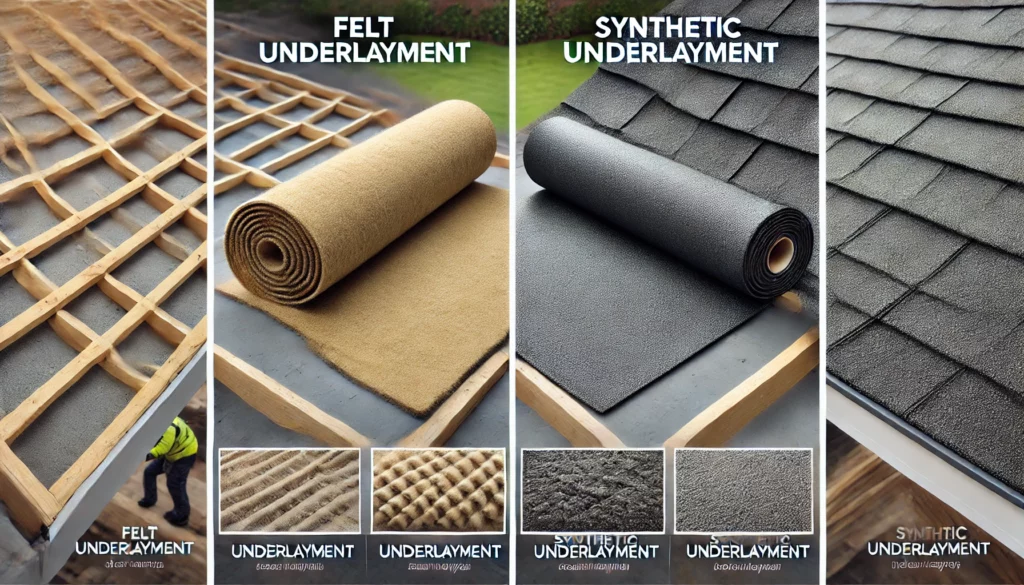
Differences Between Felt and Synthetic Underlayments
When it comes to roofing, choosing the right underlayment is crucial for the longevity and effectiveness of your roof. Two common types of underlayments are felt and synthetic. Here’s a breakdown of their differences:
Felt Underlayment
Felt underlayment, also known as tar paper, has been a staple in roofing for decades. It is typically made from a combination of asphalt, polyester, and natural plant fibers. Here are some key characteristics:
- Durability: Felt underlayment is generally durable but can tear under high stress or sharp objects. It is also more susceptible to degradation from prolonged exposure to moisture.
- Water Resistance: While felt provides a good level of water resistance, it can absorb water, which can lead to wrinkling and other issues over time.
- Installation: Felt is relatively easy to install and has been widely used for its affordability. However, it can be heavy and more difficult to handle, especially in large rolls.
- Cost: Felt is typically less expensive than synthetic options, making it a budget-friendly choice for many homeowners.
Synthetic Underlayment
Synthetic underlayment is a newer innovation in roofing materials, made from woven or spun polyethylene or polypropylene. This type of underlayment offers several advantages:
- Durability: Synthetic underlayments are highly durable and resistant to tearing, even under extreme conditions. They are designed to withstand long-term exposure to UV rays without breaking down.
- Water Resistance: These underlayments provide superior water resistance compared to felt. They do not absorb water, reducing the risk of wrinkling and other water-related issues.
- Installation: Synthetic underlayments are lightweight and easy to handle. They often come with pre-printed nailing patterns, making installation faster and more efficient.
- Cost: While more expensive than felt, the enhanced durability and performance of synthetic underlayments often justify the higher price.
Conclusion
Choosing between felt and synthetic underlayments depends on your specific roofing needs and budget. Felt is a traditional, cost-effective option that works well for many projects. However, for superior durability, water resistance, and ease of installation, synthetic underlayments are often the better choice.
Parks
Matt is Five Points Roofing's VP of Business Development, directly in charge of company growth and building a true contracting brand that is trusted by millions of homeowners. It’s not all business for Matt though, being 6’5”, he’s an avid amateur beach volleyball player and golfer. Competition is his thing. Happily married to his wife Laura, they also have a giant 72 pound ex-racing greyhound that’ll run laps around you.
Roof University is the place if you're a roofer, property owner, or insurance adjuster.
